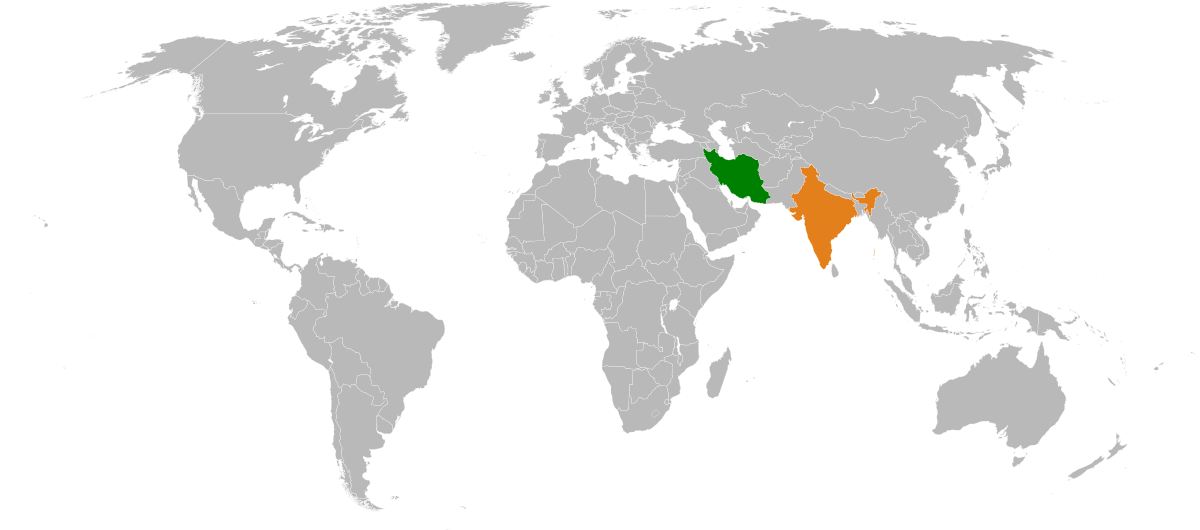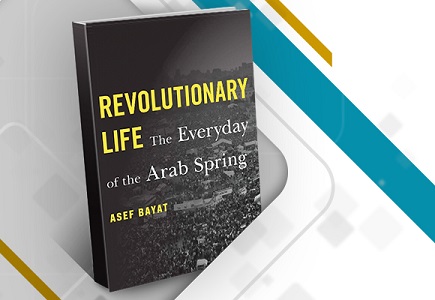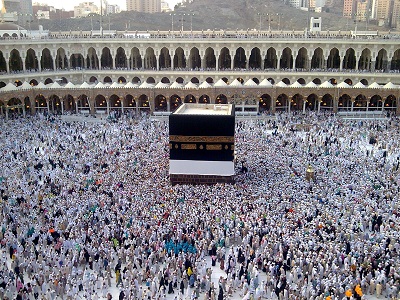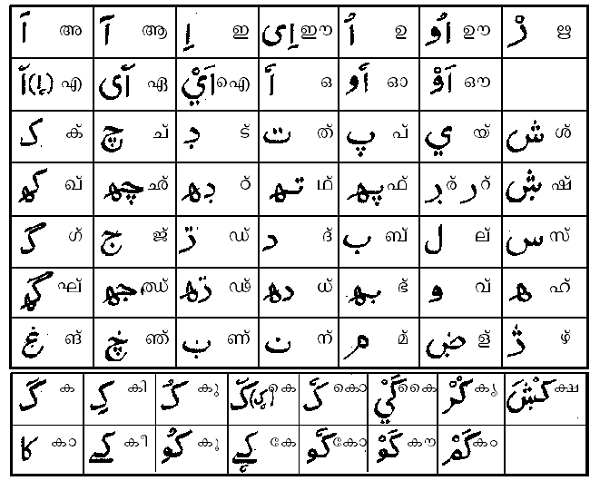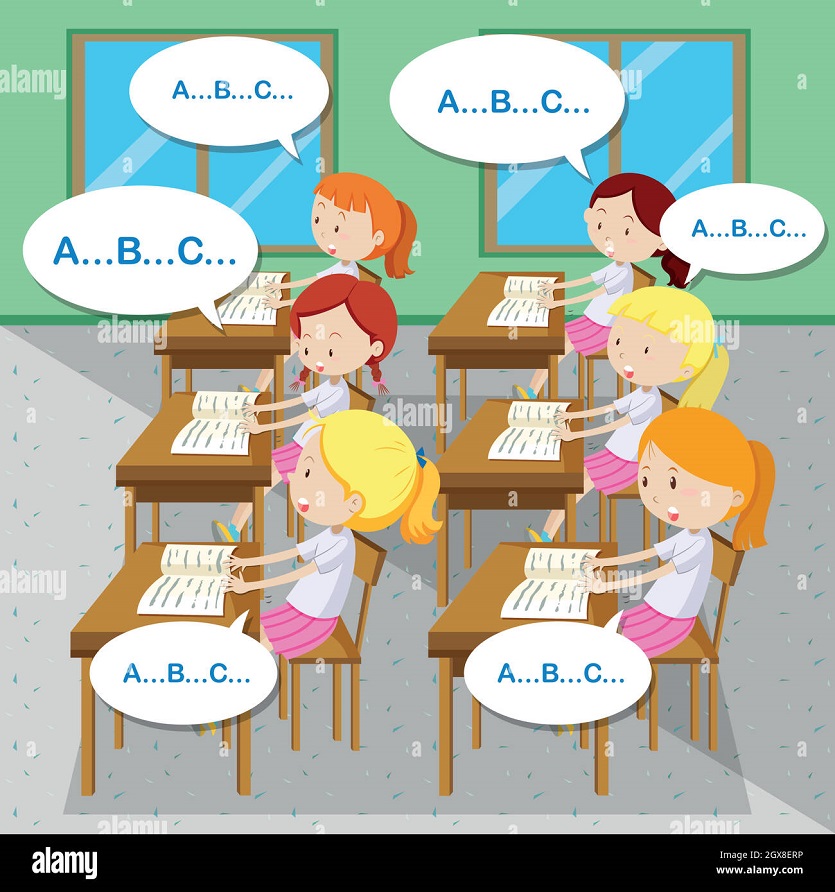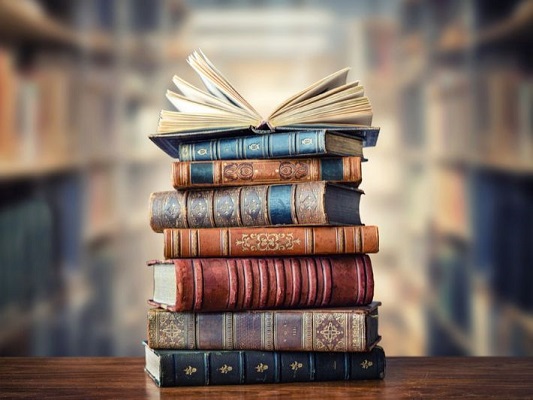Indo-Iran Cultural Relation in the Era of Globalization
24-April-2020
Dr. Mohammad Ajmal
Assistant Professor, Centre of Arabic and African Studies, JNU, New Delhi
Volume No :
Issue No :
India and Iran enjoys regular cultural and educational exchanges, date back to the ancient eras, be they Neolithic, bronze age civilization, Pre-Islamic Persia and Vedic civilization era, Achaemenid Period and Maurya Period, Gupta and Sassanid Periods, Buddhist influence in Pre-Islamic Persia, Islamic conquest of Persia and pre-Sultanate period in India, Delhi Sultanate dynasties in India, Mughal-Safavid Period, Nader Shah's Invasion of India, as far as the post-modern age goes, and having India unwelcome the 1979 Revolution. There are significant trade ties, particularly in crude oil imports into India and diesel exports to Iran.
The two historical giants always stayed with bond, friendly, cordial relations, however, the relations in this era of Globalization the things have become ups and down, although the two countries have gone to history in making exchange programs such as Memorandum of Understanding and particularly in the field of culture and social affairs.
The influx of Iranian tourists to India which has opened the new stages to develop closer connectivity between Indian and Iranian cities to increase people to people contact. Iran is a country where the Economic Gargantuan can be seen the Incredible India campaign taken up in a major way. Currently, the number of Iranians tourists coming to India is not more than a few thousands, the reverse traffic is even lower.
A growing number of Iranian students are enrolled at universities in India, most notably in the Northern Indian cities Pune and Bangalore. The growing Iranian film industry looks to India's Bollywood for technical assistance and inspiration. The Clergy government in Tehran sees itself as a leader of Shiites worldwide including India. Indian Shiites enjoy state support such as a recognised national holiday for Muharram. Lucknow a city in the state of Uttar Pradesh, continues to be a major centre of Shiite culture and Persian study in the subcontinent. Purpose
To strengthen the relationship and bond between people to people of both the countries and open fresh avenues of human development and cultural correlation from both side and find out new programmes and plans for each other.
Key Words: India, Culture, Iran, Globalization, cultural relation
Introduction India-Iran relations span centuries marked by meaningful interactions. The two countries shared a border till 1947 and share several common features in their language, culture and traditions. Both the nations have strong commercial, energy, cultural and people-to-people contacts.
Independent India and Iran established diplomatic links on 15 March 1950. The Shah visited India in February/March 1956 and Prime Minister Pandit Jawaharlal Nehru visited Iran in September 1959. Prime Minister Mrs. Indira Gandhi visited Iran in April 1974 and Prime Minister Morarji Desai visited in June 1977. The Shah, in turn, visited India in February 1978.
The Iranian Revolution in 1979 introduced a new phase of engagement between India and Iran marked by exchange of high level visits of Indian Prime Minister Narasimha Rao in September 1993, Iranian President Akbar Hashemi Rafsanjani in April 1995 and Indian Vice President K. R. Narayanan in October 1996. The trend was consolidated and enhanced at the turn of the millennium with visits by Prime Minister Atal Behari Vajpayee in 2001 and a return visit by President Mohammad Khatami in 2003, when he was also the Chief Guest at the Indian Republic Day function. The Iranian President Dr. Mahmoud Ahmadinejad visited India on 29 April 2008.
Early Association
It is a fact that India and Iran are two culturally rich and the oldest civilizations in the realm of history. Both these countries have influenced and enriched one another to such an extent that it is impossible to study the history of either without the reference to each other. India and Iran is the cradle of ancient culture and mysticism for 5000 years. The cultural relations between India and Iran date back to the dawn of history.
The close and fruitful contacts can be witnessed in the Achamenian and Sassanid period. During the time of Achamenian kings of Iran and Mauryan period of India, there were vital contacts and the Panchtantra or Kalila and Dimna were given as gift to Iranian delegates by the king of India Polkesin-II which was translated from Sanskrit into Pahlavi, Arabic and Persian and presently it has forty translations and descriptions about it. It shows the deep impact of culture of India and Iran.
With the arrival of Islam, the relations between Iran and India flourished in Sultanate period and continued in the Mughal Age. In these periods, great spiritual, mystic and literary personalities like Khawaja Moinuddin Chisthi, Hafiz and Sa’adi Shirazi, Maulana Jalaluddin Balkhi Rumi had a great impact on Indian people and scholars. It is worthy to mention here that Rabindra Nath Tagore was very much inspired by Hafiz of Shiraz.
During Mughal period Iranian culture in India reached to the highest peak covering all aspects of literature, mysticism, calligraphy, painting and architecture. It is regarded as the Golden Period for the Indo-Iran cultural relations. The Taj Mahal is regarded as the great symbol of relations between the two countries and especially in the field of architecture.
Many Indian Classics and Hindu scriptures like Mahabharata, Ramayana and Panchtantra have been translated into Persian which can be regarded as an Indo-Iranian Heritage.
Persian had a great impact on Indian life and culture. It has also served as a court language as well as the language of culture and refinement. When Persian became the lingua franca of India, the Iranian and Indian scholars engaged themselves in the great task of translating significant Sanskrit works into Persian.
After the down fall of Mughal Empire, the East India Company started to rule over India and adapted the English as an official language replacing Persian language. Consequently Persian started to decline day by day.
In this period, pioneer of Persian language rose up in the form of Mirza Asadullah Khan Ghalib Dehlavi, Allama Iqbal of Lahore and Maulana Abul Kalam Azad.
In the same way Iran before the Islamic Revolution was passing through a very delicate phase and was under the oppressive regime of Shah. The dynamic leadership of the late spiritual leader Ayatollah Imam Khomeini (Be Mercy of Allah on Him) liberated Iran from the oppressed regime of 2500 years of monarchy rule. Islam emerged as an active and dynamic ideology in the international arena. This revolution was a milestone in the recent history and the picture of Iran has been completely changed with great development in many fields especially in the field of Cultural Relations.
Contemporary Contacts
In order to give durability to the cordial cultural relations between India and Iran Maulana Abul Kalam Azad visited Iran and initiated negotiations for the cultural agreement. It was the result of his sincere initiative and efforts that on the 1st of December 1956 an Indo-Iranian Cultural Agreement was signed by Maulana Abul Kalam Azad on behalf of the Indian Government and Dr. A. A. Hikmat the then Iranian Ambassador to India on behalf of the Iranian Government. Through this agreement the Cultural Relations became more strengthened. This pact revived the ancient spiritual link between the two civilizations. He was a great pioneer of Indo-Iran Friendship.
So much so that, India and Iran have always collaborated with each other in upholding the torch of knowledge and extension of each other culture.
Even though India and Iran have friendly relations in many areas, India has not welcome the 1979 Revolution, however there are significant trade ties, particularly in crude oil imports into India and diesel exports to Iran. Iran frequently objected to Pakistan's attempts to draft anti-India resolutions at international organizations such as the OIC and the Human Rights Commission. India welcomed Iran's inclusion as an observer state in the SAARC regional organization.
After the Islamic Revolution, Indo-Iranian relations flourished in the field of Art, Culture, Economic and Education. It is important to mention here about the signing of MoUs with different important educational and cultural institutions between India and Iran. Many Iranian students are perusing their education in India and Indian students in Iran.
In 1963 Indo-Iran Society was setup by eminent personalities including Late Fakhruddin Ali Ahmed, the former President of India, Mr. B.D. Jatti, former Vice-President of India and others, the society is still playing a vital role cementing the relations between the two gigantic Dynasties.
The Indo-Iran Society has surely made a remarkable approach in expanding its activities and encourages to the scholars for pursuing the research in the field of Indo-Iranian heritage and for strengthening the existing cordial cultural relations between India and Iran.
Globalization
Diaspora
Indian in Iran
There is a small Indian community in Iran., a Sikh Temple (Gurdwara) located in Tehran, as well as small Hindu temples in Bandar Abbas and Zahidan. They were built in the 19th century by Indian soldiers in the British Army. There are also small communities in India who trace their ancestry to Iran.
Indian community in Iran, was sizeable earlier, has dwindled and now it is a small one consisting of about 200 families and growing in Tehran and about 20 and rising in Zahedan. There are a number of Indian students in Iran, approximately 800, a large number of whom pursue theological studies in Qom. There is an Indian school run by the Kendriya Vidyalaya Sangathan in Tehran and another in Zahedan.
Education
Iranian Student in India Currently over 10,000 Iranian students are pursuing studies in various educational institutions in India and 6,000 in southern states of India particularly. The Indian government provides 67 scholarships every year to Iranian students under ITEC, ICCR, Colombo Plan and IOR-ARC schemes. The numbers are growing and enrolled at universities most notably in Pune and Bangalore. India is to set up a Cultural Centre in Tehran. Iran has two Cultural Centers in Delhi and Mumbai.
India over the years has emerged as one of the favourite tourist destinations for Iranian tourists and every year around 40,000 Iranians visit India for various purposes. In February 2011, India successfully outsourced the tourist visa collection in Tehran to facilitate the visa services for Iranian tourists visiting India.
Both the historical rich countries have reached an agreement to ease the regulation of visa related issues to streamline the relationship between the people of India and Iran, be they tourists, businessmen and pilgrims or educationists.
India and Iran endorse continuous cultural and educational connections. As per an MoU signed in January 2008 between the Indian Council for Cultural Relations (ICCR), New Delhi and the Iranian Cultural Heritage, Handicrafts and Tourism Organization (ICHHTO), over the years Iranian cultural week were organized in different states of India including New Delhi and Mumbai, that observes many cultural programes and display of art and craft inscriptions in April-May 2008. India also held its “Days of Culture” at the Niyavaran Palace in Tehran and Hafezia in Shiraz from May 10-17, 2011 which was attended by over twenty thousand people. The cultural festival was dedicated to the memory of Indian Bengali poet and philosopher Rabindranath Tagore. The festival had live Indian musical performance by groups from India, food festival with live demonstrations by chefs from ITDC, handicraft exhibition by artisans from India, Indian film festival and tourism exposition.
In May 2012 Indian Embassy organised an Indian Cultural Week at the Iran Artists Forum in Tehran which had live Indian musical performance by groups from India and handicraft exhibition by artisans from India. During 2011-12, various functions were organised through out Iran to commemorate the birth anniversary of Tagore. Tagore had visited Iran in 1935 during which he wrote a poem on Iran.
Cinema
The growing Iranian film industry looks to India's Bollywood for technical assistance and inspiration.
The realities of Iranian cinema have always been a charm associated with, Iranian cinema is appreciated world over the minor incidents and aspects of life are highlighted based on the life style, religion and beliefs of the people. Indian film makers are of the view that Iranian films are more reality based and reflected the actual life of the people in the country. However, in India it is difficult for a director to make one film that will appeal to all sections of the society. Film critic said even though the facilities for film making in Iran is not at par with India, despite this, Iranian films have won awards in all major international film festivals, whereas Indian films make news if they manage an entry into an international film exhibition.
In the fifth international film festival organized at one of India’s historic city, Jaibpur in January 2013, the event showcased some 217 short, animate and featured films from 90 countries. Appreciating the works, 24 awards were distributed amongst the film makers -with two jury awards to Iranian films. The Jaipur film-fest aimed to bring the world’s film fraternity closer as well as to get broader perspectives of film-making from different countries. Two of the five Iranian movies bagged awards in Jaipur international film festival. The jury members appreciated the Iranian works calling them as major attractions of the festival.
Film lovers and filmmakers are increasingly attracted towards Iranian movies due to their clarity and treatment. These are particularly popular among Indian audience due to centuries-old cultural and traditional bonds between the two countries.
Like elsewhere, Bollywood is immensely popular in Iran. Especially amongst the middle class and the lower middle class. Once they find out that you are an Indian, the Iranians can't help but blurt out the names of actors and actresses. But because of censorship, the films don't feature song and dance sequences.
Prospects and Expectations There is a strong belief between the people of the two countries that due to so many similarities in socio-cultural, economic and political aspects, we can easily expand more reciprocal relations in all facets of our daily life. Areas such as poetry, language and linguistics, paintings and other branches of visual arts, theatre, cinema, architecture, tourism are just a small number of samples of the large potentialities in this regard.
When we take a glimpse to the history of the “Silk Road” we will understand the glory and importance of the multi-dimensional relations between India and Iran. Many may think that the main function of the “Road” has been commerce. Nonetheless, transitions of traditions, values, norms, believes as well as different features and inventions of arts and industry hall have been taken place through it.
What is expected now, at this time of globalization is comprehensive socio-cultural, economic and political relations between the two countries. It is the epoch of our universities and other scientific centers and societies to put more time on planning and design new programmes for our scientists, artists, students, researchers and professors of the two countries to do research and work with each other in the different fields to create more productive prospect for the two historical giants.
Conclusion
Indo-Iran relations have been the subject of intense debates and discussions in recent years, particularly post September 11, 2001. The growing Indo-US relations are considered to have cast a shadow on Indo-Iran ties. Given the anti-Iranian thrust in US foreign policy, particularly on nuclear issue, the Indian foreign policy faces a daunting task of maintaining a balanced outlook towards Iran. However, the paper does not cover the aspects such as politics, economy, foreign policy or defense etcetera, though the culture has played a homeopathic role towards making connections or bridging gaps by people’s movements and contacts between groups, organizations, chamber and business bodies. As we are on the threshold of the post-globalization era, and globalisation refers to faster and multi-directional cultural flows. It celebrates cultural diversity, whereas the modernisation era prioritised cultural unity. It promotes integration of the world and calls for the removal of all cultural barriers. Globalisation consists of social, economic and political adjustments that people may embrace to characterize their culture and incorporate it with the world. It is a concept that has its economic, social and political roots and consequences. Although globalisation is a vital process toward transferring knowledge and education to the world, it still has its negative effects on most cultures and civilizations. Its impact on cultures, so India and Iran can come closer than ever before, in this connection Indian cultural centre in Tehran will play a pivotal role in building walls of stronger friendship as well as both the nations may look into their travel documents norms for making effortless people to people contacts.
References: • N.S. Gorekar, “Indo-Iran Relations: Cultural Aspects”, Sindhu Publications, 1970.
• Grijesh Pant, Prakash C. Jain, Aftab Kamal Pasha, “Contemporary Iran and Emerging Indo-Iran Relations”, Gulf Studies Programme, School of International Studies, Jawaharlal Nehru University, 1996.
• Najma Heptullah, “Indo-West Asian Relations: The Nehru Era”, Allied Publishers, 1991.
• John L. Esposito, “Islam and Politics”, Syracuse University Press, 1998.
• Nalineen M. Chapekar, “Ancient India and Iran: a study of their cultural contacts”, Ajanta Publications (India), 1982.
• Francis Robinson, “The Mughal Emperors: And the Islamic Dynasties of India, Iran and Central Asia, 1206-1925”, Thames & Hudson, 2007.
• PageKicker Co, “The Taj Mahal”.
• Muhamamd Abdul Ghani, “A history of Persian language & literature at the Mughal court: Humāyūn, Volume 2”, Gregg Internat. Publ., 1972.
• Farah Pahlavi, Patricia Clancy, “An Enduring Love: My Life with the Shah: A Memoir”, Miramax Books, 06-Apr-2005.
• Charles Kurzman, “The Unthinkable Revolution in Iran”, Harvard University Press, 2004.
• Ravindra Kumar, “Selected Works Of Maulana Abul Kalam Azad:, Volume 7”, Atlantic Publishers & Distri, 1992.
• A Released issued by the Ministry of Commerce, Government of India, published in 2012.
• Anwar Alam, “India and Iran: An Assessment of Contemporary Relations”, New Century Publications, 2011.
• The Indian Express, A Daily English Newspaper, issued from New Delhi, October 2012.
• Outlook, A weekly Magazine published from New Delhi, August 6-13, 2011.
• A Biennial Report issued by the Indian Council for Cultural Relations (ICCR) New Delhi, published in 2011.
• Frontline, A Monthly Journal, issued from New Delhi. 2012.
• A Brochure, published from the Cultural Centre of Islamic Republic of Iran, New Delhi in 2010.
• The Times of India, a Leading Daily English Newspaper published from New Delhi in November 2012.
• Mayapuri, A Hindi Language Monthly Magazine issued from Mumbai, India in 2010.
• The Hindustan Times, An English Daily Newspaper, published from New Delhi in January 2013.
• An Online Newsportal “Masala”, Bollywood News, Star Style and Asian Glamour.
